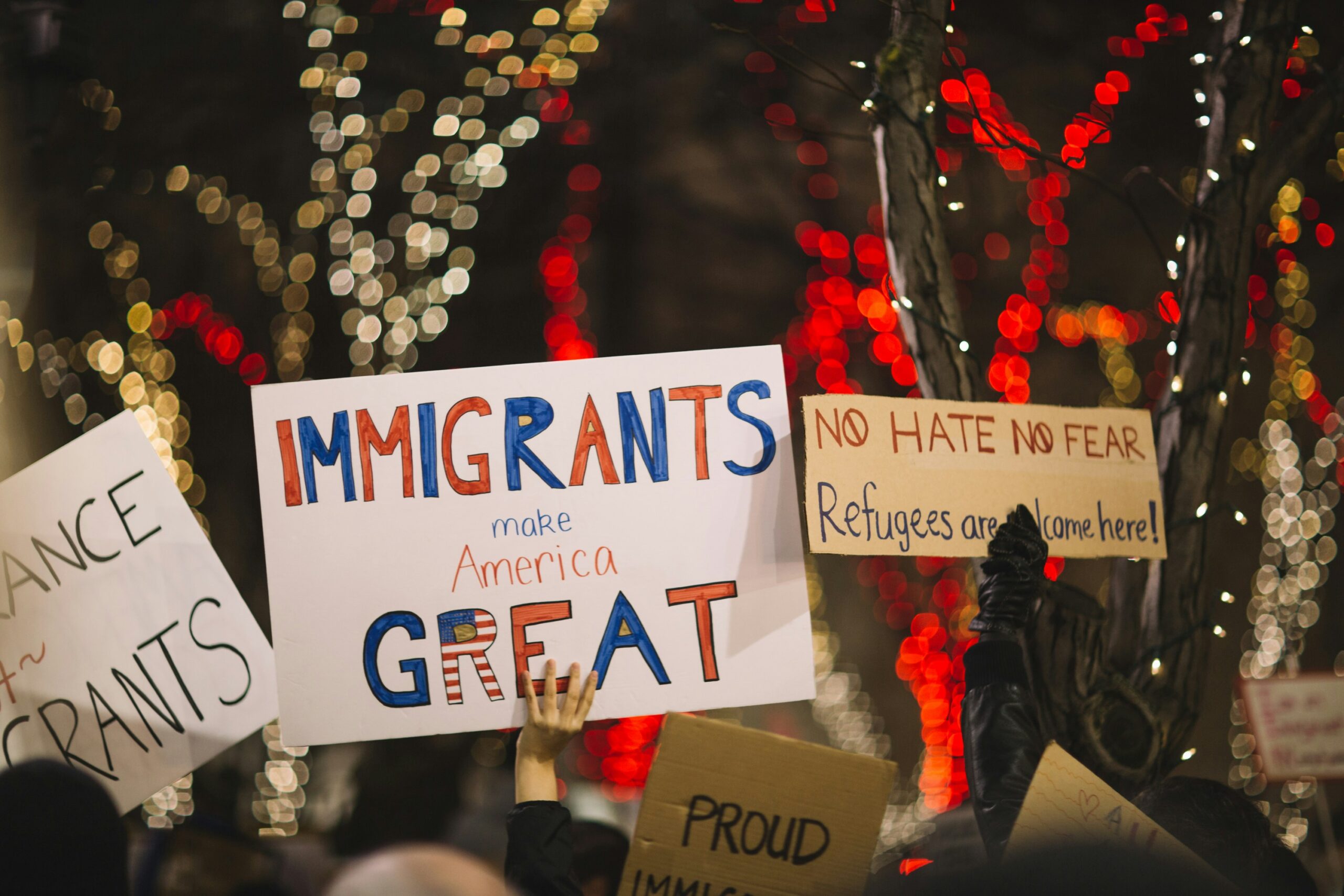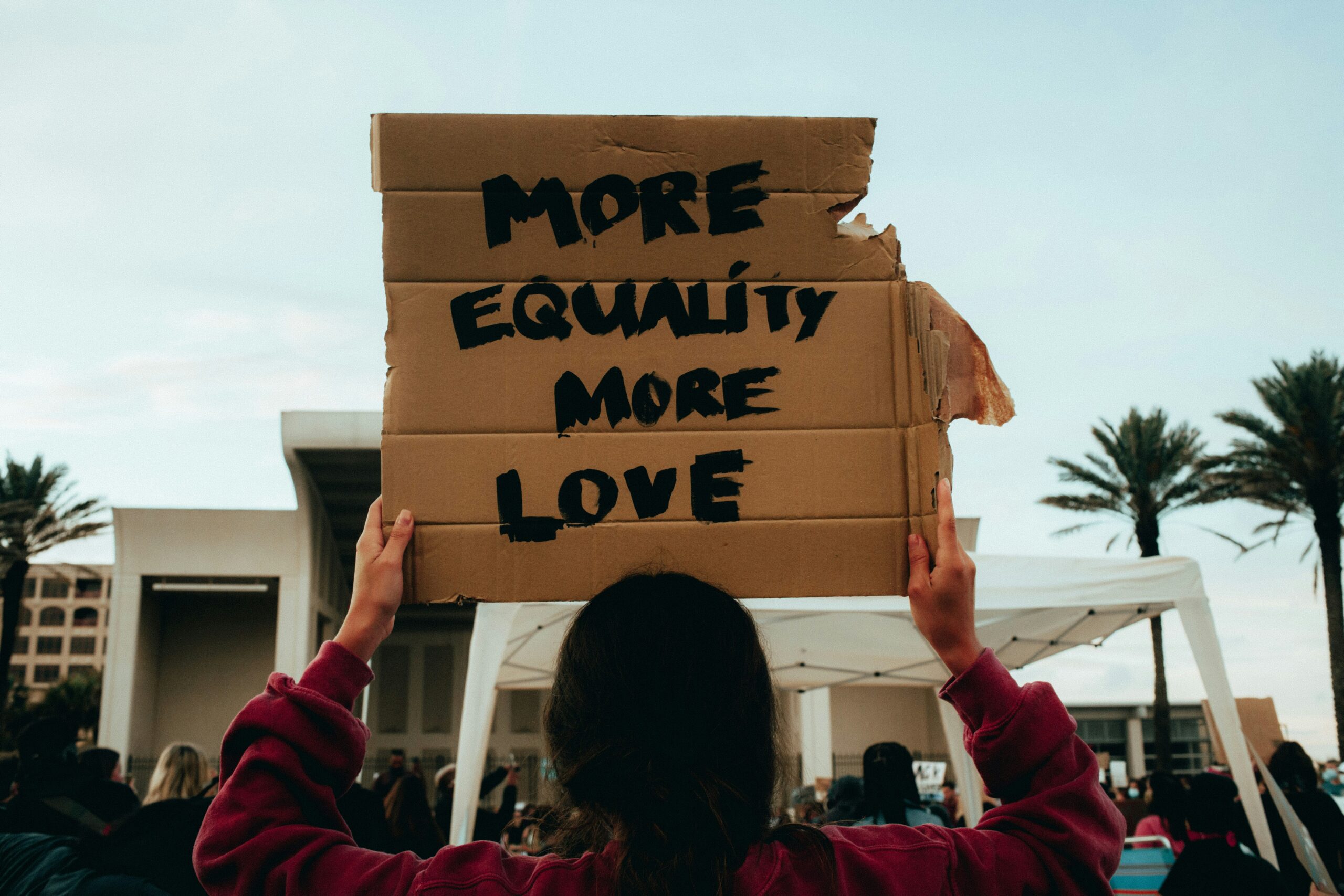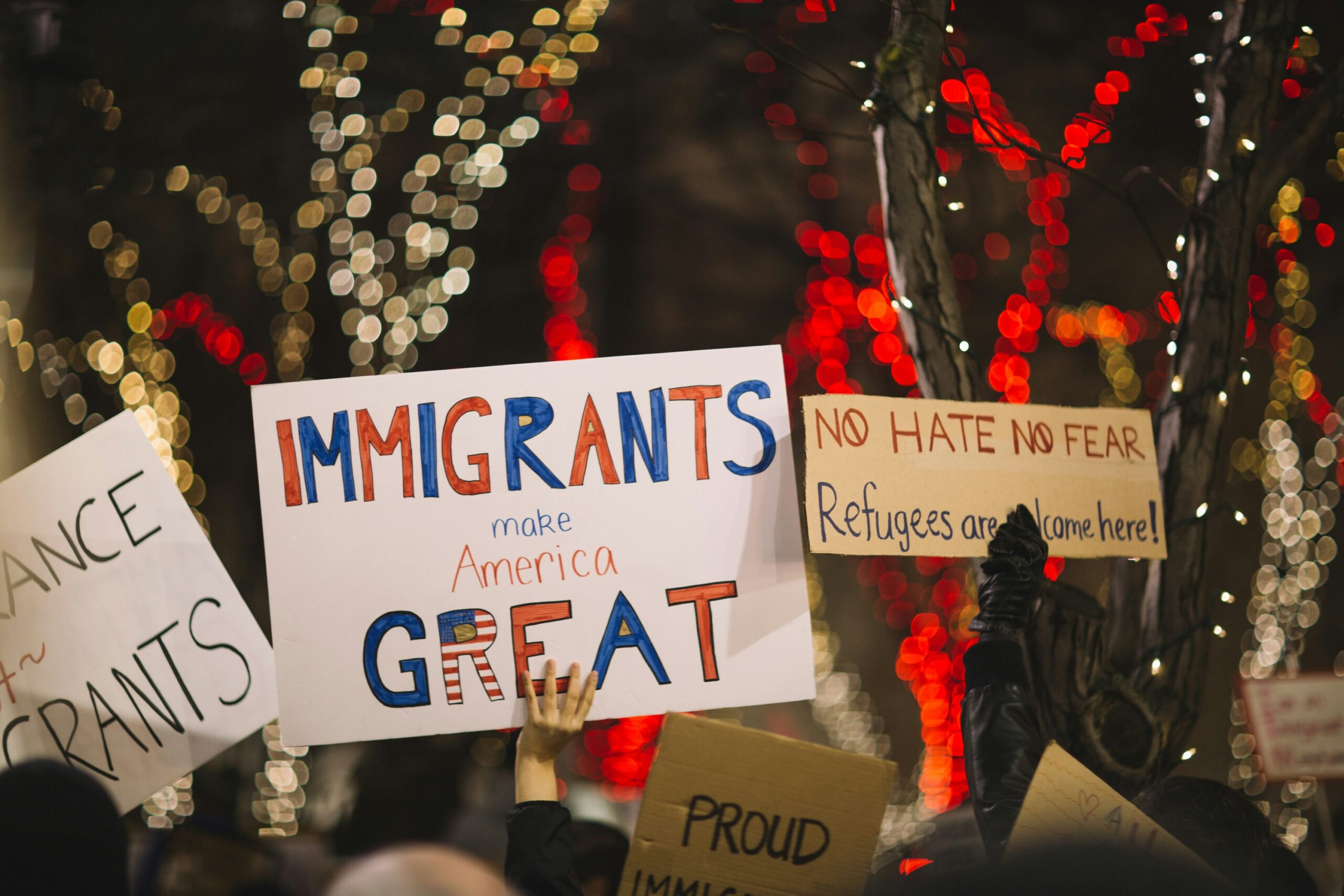Introduction to A Day Without Immigrants
The concept of “A Day Without Immigrants” emerged as a powerful protest movement, aiming to highlight the critical role played by immigrants in society, economy, and culture. Initially catalyzed by rising anti-immigrant sentiment and policies in various countries, this event seeks to illustrate how essential immigrant contributions are to the fabric of daily life. On this designated day, participants abstain from work, school, and community activities, effectively demonstrating the impact that a lack of immigrant participation would have across various sectors.
The origins of this movement can be traced back to earlier demonstrations and protests, notably in the United States. These events arose in response to specific legislative proposals perceived as discriminatory or harmful to immigrant communities. By choosing an entire day to emphasize their presence and value, participants aim to challenge negative stereotypes and cultivate a deeper understanding of the realities immigrants face. The significance of A Day Without Immigrants extends beyond mere visibility, encompassing broader discussions about human rights, dignity, and equity.
The event underscores the contributions of immigrants in various fields—ranging from agriculture and construction to healthcare and education. It illustrates the collective efforts of diverse communities that drive innovation and foster economic growth. Furthermore, this day serves as a critical reminder of the cultural richness brought forth by immigrant communities, enriching local traditions and celebrating multiculturalism.
As the movement gains traction, it unites individuals across various backgrounds, promoting solidarity and advocacy for immigrant rights. Participants advocate not just for their own rights, but for a more inclusive society that recognizes the indispensable role of immigrants. A Day Without Immigrants thus represents a resounding call for justice and recognition in contemporary discourse.
The Historical Context of A Day Without Immigrants
The event known as A Day Without Immigrants traces its roots back to the ongoing debates surrounding immigration reform in the United States. It gained significant attention following political events in the early 2000s, particularly the failed attempts to pass comprehensive immigration reform in 2006 and 2013. These efforts highlighted the complexities and challenges faced by immigrant communities, prompting calls for activism and solidarity among various interest groups. As the political landscape became increasingly polarized, A Day Without Immigrants emerged as a radical but necessary response to the climate of hostility directed toward immigrants.
The first notable occurrence of this event took place in 2006, when millions of immigrants and their allies participated in marches across the country to assert their contributions to American society. The movement aimed to raise awareness about the importance of immigrants in the economy and cultural fabric of the nation. The protests captured significant media coverage, shedding light on the plight of undocumented individuals and the pervasive misconceptions surrounding immigration. The actions taken during this period were monumental, laying the groundwork for subsequent mobilizations.
A Day Without Immigrants re-emerged as a tactical protest in 2017, following the election of a president who championed exclusionary immigration policies. On February 16, 2017, workers, students, and activists engaged in a nationwide strike, refusing to participate in the economy, which sought to illustrate the critical role immigrants play within various sectors. By refraining from work, purchasing goods, and attending school, the participants sent a clear message: the absence of immigrants would severely impact businesses, communities, and the American way of life. This powerful stand not only galvanized the immigrant community but also informed public discourse regarding immigration policy and reform.
Plans for February 3, 2025: What to Expect
February 3, 2025, is shaping up to be a significant day as communities across the United States plan to observe a Day Without Immigrants. This day aims to highlight the indispensable contributions of immigrants to the nation, inviting everyone to witness the impact of their absence. Various activities and protests have been organized, reflecting the diverse communities involved and their shared commitment to this cause.
Major cities such as New York, Los Angeles, Chicago, and Miami are expected to be focal points for demonstrations. Each city has its own tailored plan for the day, involving marches, rallies, and community gatherings. For instance, organizers in New York have announced a large-scale march that will begin in Union Square and culminate in a gathering at City Hall, where speakers from different immigrant backgrounds will share personal stories and insights. In Los Angeles, festivities are planned, complete with cultural presentations, highlighting the rich tapestry of immigrant contributions.
Community organizations and local activist groups are increasingly collaborating to ensure a widespread impact for this day of solidarity. They are emphasizing the importance of creating spaces for dialogue and support within their neighborhoods. This collaboration extends to educational institutions as well, with many schools pledging to engage students and staff in discussions about immigration and its significance in American history.
Alongside these on-ground activities, social media campaigns have gained momentum, serving as instrumental tools for mobilization. Hashtags such as #DayWithoutImmigrants and #StandWithUs are being promoted to amplify the message and reach a broader audience. These platforms enable communities to share their experiences and encourage participation, thus reinforcing the overarching objective of demonstrating the essential role immigrants play in society. Overall, February 3, 2025, promises to be a compelling day, focused on unity and advocacy for immigrant rights.
The Economic Impact of Immigrants: A Closer Look
Immigrants play an essential role in the economic landscape of the United States, contributing significantly to the labor force and overall economic growth. According to data from the Bureau of Labor Statistics, immigrants comprise roughly 17% of the total U.S. workforce, reflecting their vital participation in critical sectors. This labor force participation is particularly pronounced in industries such as agriculture, hospitality, healthcare, and technology, where immigrants often fill gaps that are difficult to meet with the native workforce alone.
Furthermore, immigrants are renowned for their entrepreneurial spirit. In fact, a report from the National Immigration Forum indicates that immigrants are nearly twice as likely to start a business compared to native-born citizens. In 2020, immigrants founded 45% of Fortune 500 companies, showcasing their influence on innovation and job creation. These entrepreneurial endeavors not only spur economic activity but also provide job opportunities for American workers, thereby reinforcing the interconnectedness of immigrants and the native economy.
The economic contributions of immigrants extend beyond mere labor provision; they also foster innovation, enhance cultural diversity, and stimulate local economies. For instance, immigrant workers are pivotal in driving consumer demand by contributing to local housing markets and businesses, thereby bolstering overall economic resilience. Additionally, immigrants often fill key roles in technological sectors, contributing to advancements that are integral to maintaining the United States’ competitive edge globally.
Therefore, the potential repercussions of a day without immigrants would likely be profound. Industries that rely heavily on immigrant labor would experience significant disruptions, resulting in delays, lost revenue, and ultimately an adverse effect on the national economy. The absence of immigrant entrepreneurship would also stifle innovation and detract from the diverse cultural fabric that enriches American society.
Personal Stories: Voices of Immigrants
On February 3, 2025, many immigrants took to the streets to express their frustrations and aspirations through a national day of protest. Each story shared carries its weight, reflecting a tapestry of diverse experiences that shape the immigrant narrative in America. Immigrants play a crucial role in crafting the nation’s economic and cultural landscape, and their voices deserve to be heard.
Maria, a Salvadoran immigrant, arrived in the United States seeking refuge from violence. For her, participating in the protest was not just a matter of standing against discrimination; it was an opportunity to highlight the necessity of safe spaces for all immigrants. “I want my children to grow up in a country that values them regardless of where they came from,” she stated. Her determination to advocate for change stems from watching her community suffer from policies that dehumanize immigrants.
Similarly, Abdi, who came from Somalia, shared his journey of integrating into American society. He expressed how participating in the protest represents more than solidarity; it symbolizes the hope for future generations of immigrants. “When we come together, we showcase our strength. We are not just numbers; we are individuals with stories and dreams,” he reflected. Abdi’s experience in navigating bureaucratic challenges resonates with many, revealing the systemic hurdles immigrants face daily.
Moreover, the family of Lin, an undocumented Chinese immigrant, recounts the toll that fear of deportation has taken on their lives. Lin’s teenage son emphasized the importance of visibility during the protest: “We want to show people that immigrants are their neighbors, friends, and colleagues. We contribute to the society where we live.” Their collective voice seeks to dismantle the stigma surrounding immigrants, advocating for acceptance and understanding.
These personal stories collectively demonstrate the range of motivations that led immigrants to participate in the day without immigrants. Their experiences underscore the importance of unity and activism in advocating for equitable treatment and recognition in American society. Each account serves as a reminder of the resilience and courage that define the immigrant spirit.
Community Reactions and Support
On February 3, 2025, the Day Without Immigrants served as a powerful catalyst for community engagement and solidarity. Various demographic groups, including both immigrant and non-immigrant populations, took to social media, local gatherings, and community events to express their support for the movement. Many non-immigrant citizens recognized the essential role that immigrants play in their neighborhoods and local economies, leading to an outpouring of support that transcended cultural and ethnic boundaries. As businesses shuttered their doors in solidarity with the protest, the collective message resonated: every member of the community is vital to its overall success.
Local businesses played a critical role in the initiative, joining forces to create solidarity initiatives that highlighted the contributions of immigrant workers. Some establishments implemented “Walk a Day in Their Shoes” programs, where owners and staff participated in a day of silence or limited operation to reflect on the impact of immigrants in their workforce. Additionally, several business owners pledged to donate a percentage of their daily earnings to local organizations that support immigrant rights and integration. Such collaborative efforts showcased a commitment to fostering a safe and inclusive environment for all members of society.
The broader social implications of this unified action prompted community dialogues about economic interdependence and mutual support. Neighborhoods that traditionally saw divisions began to lean into conversations about shared experiences and aspirations. Educational workshops, town hall meetings, and artistic expressions, including murals and performances, emerged as platforms for storytelling and advocacy. Communities emphasized the need to ensure that immigrant voices are heard and valued in all aspects of society. In this charged atmosphere, mutual understanding and respect became vital components of community solidarity, showcasing a deep appreciation for diversity and collaboration.
Media Coverage: Shaping Public Perception
The role of media coverage in shaping public perceptions of immigration issues cannot be overstated, particularly in the context of events like A Day Without Immigrants. This protest, organized to advocate for the rights of immigrant communities, has historically garnered varying responses from the media. Different outlets often present distinct narratives, which can significantly influence public opinion and, subsequently, policy decisions regarding immigration.
Mainstream media typically plays a crucial role in framing the narrative surrounding immigration protests. Coverage often ranges from sympathetic portrayals of the protesters’ struggles to more critical perspectives highlighting societal concerns or emphasizing logistical disruptions. For instance, left-leaning media outlets may focus on the positive contributions of immigrant communities to the economy, while right-leaning outlets may spotlight the potential impact of large-scale protests on public safety or economic stability. This divergence in coverage creates contrasting portrayals that can shape audience perceptions dramatically.
The tone of the coverage is equally important. Emotional and human-interest stories tend to resonate more with the public, creating empathy towards immigrant protesters and their causes. When media outlets feature personal narratives of individuals impacted by immigration policies, it allows the audience to connect on a deeper level, often leading to increased public support. Conversely, a more detached, analytical approach may fail to engage the audience fully, resulting in a muted response to the issues at hand.
Moreover, the timing and framing of stories surrounding A Day Without Immigrants play vital roles in league with audience sentiment. As the media landscape continues to evolve, the influence of social media cannot be ignored. Advocacy groups have increasingly turned to platforms like Twitter and Facebook to disseminate information and rally support, shaping how events are perceived beyond traditional media outlets. Overall, the manner and tone in which media covers immigration-related events profoundly impact public perception and future discussions on policy.
Policy Implications and Future Aspirations
The Day Without Immigrants, observed on February 3, 2025, serves as a pivotal moment in the ongoing discourse surrounding immigration policy in the United States. This event, which saw a significant number of immigrants and their allies abstaining from work and school, aims to highlight the critical contributions immigrants make to the economy and society. The immediate policy implications from this demonstration are substantial, as it signals a collective call for lawmakers to reassess current immigration policies and consider reforms that can address the complexities inherent to the immigration system.
One of the primary aspirations of the protest participants is to foster a more inclusive dialogue on immigration. Advocates argue that policymakers must engage with immigrant communities to understand their challenges and experiences better. This grassroots initiative could lead to the development of policies that not only protect immigrants but also promote their integration into the broader social fabric of the nation. The successful mobilization of various communities on this day underscores the potential for sustained advocacy that could influence legislative priorities.
In the long-term, the Day Without Immigrants serves as a catalyst for transformation within immigration policy frameworks. By demonstrating the economic and social impact of immigrants, advocates hope to deter any future legislative efforts that marginalize these communities. Participants aspire to create a political landscape characterized by progressive reform, where pathways to citizenship are accessible, and labor rights are upheld. Moreover, the event is anticipated to inspire similar demonstrations and actions across the country, establishing an ongoing movement that presses for equitable immigration policies.
Ultimately, as lawmakers observe the outcomes of the Day Without Immigrants, it is expected that they will feel the pressure to engage in meaningful reform discussions, reinforcing the importance of this day in the quest for just and effective immigration policy solutions.
Conclusion: The Importance of Solidarity and Advocacy
In recognizing the significance of the Day Without Immigrants, it becomes imperative to highlight the enduring need for solidarity and advocacy within our communities. The event of February 3, 2025, not only underscores the critical contributions that immigrants make to society but also serves as a poignant reminder of the ongoing struggle for their rights. Throughout the blog post, we have explored the various dimensions of this day, including the historical context of immigrant advocacy and the collective impact of immigrant communities across various sectors.
Solidarity emerges as a cornerstone of effective advocacy. When individuals and groups come together to support the rights of immigrants, they amplify their voices and create a unified front against discrimination. This collective action fosters a sense of belonging and encourages allies to engage actively in conversations surrounding immigration policies. Advocacy is not merely a one-time effort; it demands ongoing engagement and education to shift public perceptions and influence policymakers. The Day Without Immigrants serves as a catalyst for such dialogue, urging society to reconsider the narratives surrounding immigration.
In conclusion, the importance of solidarity and advocacy cannot be overstated. As we move forward, let us remain committed to fostering inclusive dialogues and supporting policies that protect immigrants’ rights. By doing so, we honor the spirit of the Day Without Immigrants and contribute to a more just and equitable society for everyone.



